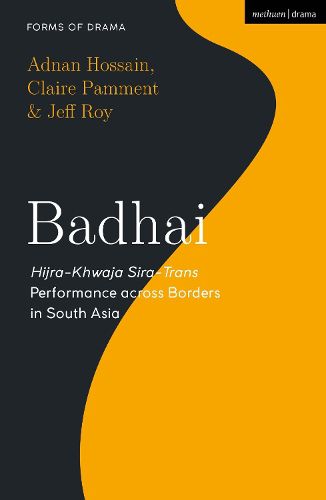Readings Newsletter
Become a Readings Member to make your shopping experience even easier.
Sign in or sign up for free!
You’re not far away from qualifying for FREE standard shipping within Australia
You’ve qualified for FREE standard shipping within Australia
The cart is loading…






This is the first full-length book to provide an introduction to badhai performances throughout South Asia, examining their characteristics and relationships to differing contexts in Bangladesh, India, and Pakistan. Badhai's repertoires of songs, dances, prayers, and comic repartee are performed by socially marginalised hijra, khwaja sira, and trans communities. They commemorate weddings, births and other celebratory heteronormative events. The form is improvisational and responds to particular contexts, but also moves across borders, including those of nation, religion, genre, and identity.
This collaboratively authored book draws from anthropology, theatre and performance studies, music and sound studies, ethnomusicology, queer and transgender studies, and sustained ethnographic fieldwork to examine badhai's place-based dynamics, transcultural features, and communications across the hijrascape. This vital study explores the form's changing status and analyses these performances' layered, scalar, and sensorial practices, to extend ways of understanding hijra-khwaja sira-trans performance.
$9.00 standard shipping within Australia
FREE standard shipping within Australia for orders over $100.00
Express & International shipping calculated at checkout
This is the first full-length book to provide an introduction to badhai performances throughout South Asia, examining their characteristics and relationships to differing contexts in Bangladesh, India, and Pakistan. Badhai's repertoires of songs, dances, prayers, and comic repartee are performed by socially marginalised hijra, khwaja sira, and trans communities. They commemorate weddings, births and other celebratory heteronormative events. The form is improvisational and responds to particular contexts, but also moves across borders, including those of nation, religion, genre, and identity.
This collaboratively authored book draws from anthropology, theatre and performance studies, music and sound studies, ethnomusicology, queer and transgender studies, and sustained ethnographic fieldwork to examine badhai's place-based dynamics, transcultural features, and communications across the hijrascape. This vital study explores the form's changing status and analyses these performances' layered, scalar, and sensorial practices, to extend ways of understanding hijra-khwaja sira-trans performance.